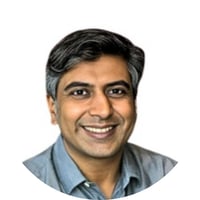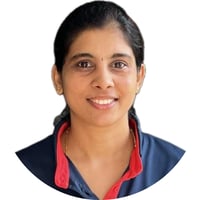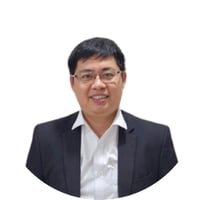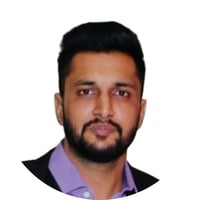Abstracts
From Embedded to Empowered: The Rise of Software-Defined Product
In automotive, it’s called a “software-defined vehicle.” But the move toward software-defined products is also happening in aerospace, industrial systems, medical devices, and other industries. Until now, most customer-visible capabilities in products have been implemented as mechanical and electronic subsystems, with certain critical operational functions implemented using embedded software. As a result, much of the functionality has been set at production.
Going forward, the features that represent brand-distinctive attributes and customer-perceived value will be defined through software, providing the ability to generate new value throughout the lifespan of the system. This transformation to “software-defined” requires changes in development processes, new synergies between teams, and new ways to leverage products like MATLAB® and Simulink®. In this talk, discover key approaches to capturing the value while mitigating the risks associated with the disruptive changes.

Modeling and Simulation in Robotics & Automation for Manufacturing

Speakers
[Dr Marcelo H. ANG Jr]
Professor, Department of Mechanical Engineering National University of SingaporeDr. Ang, an Associate Professor in Mechanical Engineering at the National University of Singapore, is a robotics pioneer. He introduced the first programmable robotic system for ship welding and contributed to autonomous driving with the Singapore MIT Alliance for Research and Technology. He's actively involved in professional associations and committees. Dr. Ang founded the Singapore Robotics Games, advises the World Robot Olympiad, and received a 2018 Merit Award from Enterprise Singapore for his quality and standards contributions.
[Dr Chong Shin Horng]
Senior Scientist Advanced Remanufacturing and Technology Centre (ARTC)Dr Chong is a Senior Scientist at the Advanced Remanufacturing and Technology Centre (ARTC). With a distinguished Doctor of Engineering degree from Tokyo Institute of Technology, she specializes in robotics, including the development of robotic arms for EV battery maintenance. Dr. Chong's research interests encompass precision motion control, control theory, rehabilitation assistive equipment, and biomedical engineering, contributing significantly to technology and healthcare advancement.
[Li Xiaocong]
Research Scientist Singapore Institute of Manufacturing Technology (SIMTech)Dr Li Xiaocong is a Research Scientist with SIMTech. He received his BEng degree and his PhD degree from the National University of Singapore. After completing his Ph.D. under the A*STAR Graduate Scholarship (AGS), he joined SIMTech’s Mechatronics Group. He currently leads a research project on data-driven iterative tuning for commercial high-speed controller. His research interests include data-driven intelligent control and learning control with application to industrial robotics and precision machines.
[Ritesh Tekriwal]
Principal Engineer ION MobilityRitesh Tekriwal, a Principal Engineer at Ion Mobility since June 2021, leads projects and innovates solutions for electric two-wheelers.
Previously at Ather Energy, he developed smart scooter features, sensor fusion algorithms, and test data automation. Ritesh also designed a Data Logging System and contributed to features like auto-indicator cancellation.
[Ian Alferez]
Technical Software Manager VinFastIan Alferez is a seasoned Technical Software Manager at VinFast, where he brings his extensive expertise to lead and drive innovation in automotive software solutions. With a passion for cutting-edge technology and a proven track record of delivering top-notch software solutions, Ian plays a pivotal role in advancing VinFast's mission to shape the future of the automotive industry. His dedication to excellence and commitment to pushing the boundaries of software engineering make him an invaluable asset to the VinFast team.
[Alex Lo]
Group CEO TechSource Systems & Ascendas Systems GroupWith his passion in software engineering, Mr Alex Lo founded TechSource Systems in 1996, a company for distributing high-end computing software for research institutes, multinational corporations and universities in South East Asia and is the group CEO.
He also founded i-Math Pte Ltd, which distributes high-end didactics and complex analysis software tools. He also serves in his personal capacity at charitable and non-profit organizations.
[Zach Goh]
Regional Technical Manager TechSource SystemsZach is a roboticist with over a decade of experience in factory automation across industries in Asia Pacific, working with both manipulators and mobile robots. His dream is to enable robots enter the home, construction site, kitchen and other places with unstructured environments. Hence, he hopes to inspire aspiring engineers to solve tough engineering problems through cross-fertilization of ideas across multiple disciplines. Zach is an alumnus of NUS via his Bachelor’s in Computing and graduated with a Master's in Engineering from Johns Hopkins University.
[Ian Phillip Lowe]
Application Engineer TechSource SystemsIan completed his studies in the EPD Robotics Track at SUTD and subsequently transitioned into the role of Research Officer at SUTD, where he effectively managed and concluded research projects related to robotics development within ROAR Labs. Currently, Ian is employed at TechSource Systems, where he collaborates with clients from diverse industries, applying Mathworks products to address a wide range of applications.
Accelerating Software Development, Verification and CI/CD Integration

Model-Based Design Empowers Virtual Simulation and Testing
Model-Based Systems Engineering (MBSE) represents an evolution of traditional Systems Engineering by embedding modeling as a core methodology throughout the entire lifecycle of engineered systems. Systems Engineering itself is a transdisciplinary and integrative approach aimed at ensuring the successful realization, use, and retirement of complex systems through the application of scientific, technological, and management principles. Building upon this foundation, MBSE formalizes the use of models to support critical activities such as requirements definition, system design, performance analysis, verification, and validation.
By shifting from document-based processes to model-driven practices, MBSE enables engineers to create a single source of truth that integrates different disciplines and stakeholders. This provides the ability to perform virtual simulation and testing early in the conceptual design phase and to continuously refine the system throughout development and later life cycle stages. As a result, MBSE improves collaboration, reduces design risks, shortens development cycles, and accelerates innovation by allowing organizations to explore alternatives, detect issues earlier, and validate decisions in a virtual environment before physical implementation.

Autonomous Concrete Finishing Robot: From Simulation to Deployment
Intelligent mobile robotics is transforming industrial automation by enabling flexible, adaptive, and software-defined factories. With MathWorks tools such as MATLAB® and Simulink®, engineers can design, simulate, and deploy advanced robotics algorithms including perception, navigation, control, and coordination. Model-Based Design accelerates development by providing a unified workflow from system-level simulation to real-time deployment on embedded hardware. This approach supports rapid prototyping, integration with industrial systems, and continuous software updates, empowering factories to achieve higher efficiency, safety, and adaptability in dynamic production environments.
.png?width=200&height=200&name=Benjamin%20Ma%20(1).png)
Automated Visual Inspection with Deep Learning for Quality Assurance
Automated visual inspection with deep learning is transforming quality assurance in modern software-driven factories. Using MathWorks tools, engineers can develop, train, and deploy deep learning models for defect detection, classification, and anomaly recognition directly from production data. The integrated workflow—from data preparation and model training in MATLAB® to real-time deployment on embedded and edge devices—enables scalable, reliable, and cost-effective inspection systems. This approach accelerates defect detection, reduces manual inspection effort, and ensures consistent product quality, supporting the vision of intelligent, software-defined factories.
.png?width=200&height=200&name=Gerald%20(1).png)
Battery Energy Storage Systems: Modeling to System Integration
.png?width=200&height=200&name=Jihan%20(1).png)
AI for Electrification: Smart Control and Optimization
Electrification is transforming industries from automotive to energy systems, demanding smarter, more efficient, and scalable control strategies. Artificial Intelligence (AI), combined with Model-Based Design (MBD), enables the development of intelligent control and optimization algorithms that can adapt to dynamic operating conditions and maximize system performance. With MathWorks tools, engineers can accelerate this transition through data-driven modeling, reinforcement learning, and automated code generation for real-time deployment. This session will highlight how AI-powered workflows for electrification can be integrated into software factories, streamlining the design-to-deployment pipeline while ensuring quality, scalability, and traceability across electrified products.
.png?width=200&height=200&name=Gerald%20(1).png)
Accelerating Electrification Workflows with Hardware-in-the-Loop Testing
Electrification is driving rapid innovation across industries, from automotive to energy systems. This talk highlights how engineers and researchers can leverage real-time testing and hardware-in-the-loop (HIL) workflows with Speedgoat to prototype, validate, and deploy electrification technologies with confidence. Real-world use cases will showcase how to accelerate development, reduce risk, and bridge the gap between simulation and implementation

Accurate Load Forecasting: Modeling and Predictive Analytics with MATLAB
.png?width=200&height=200&name=Douglas%20(1).png)
Accelerating Radar and Satellite Communication System Design with MATLAB
- - Importance of integrated radar & satellite communication system
- - Scenario Modeling includes asset trajectories, orbits & visualization
- - Link Budget Analysis & Performance Evaluation
- - Joint Radar/Satcom use cases & rapid prototyping

RF and Wireless System Prototyping on FPGA and SoC
.png?width=200&height=200&name=JonathanTEE%20(2).png)
Modeling the Full Transceiver Chain: MATLAB Workflows for Antenna to Digital Bits
- - End-to-end transceiver chain development workflow
- - Design methods and tools for antenna elements and arrays
- - Baseband components for receiving algorithm development and optimization
- - RF front end design and architectural exploration

AI-Augmented Wireless Communication Systems
Whether you use machine learning, deep learning, or reinforcement learning workflows, you can reduce development time with ready-to-use algorithms and data generated with MATLAB ® and wireless communications products. You can easily leverage existing deep learning networks outside MATLAB; streamline training, testing, and verification of your designs; and simplify deployment of your AI networks on embedded devices, enterprise systems, and the cloud. With MATLAB, you can:
- - Generate training data in the form of synthetic and over-the-air signals using the Wireless Waveform Generator app
- - Augment signal space by adding RF impairments and channel models to your generated signals
- - Label signals collected from wireless systems using the Signal Labeller app
- - Apply reusable and streamlined training, simulation, and testing workflows to various wireless applications using the Deep Network Designer and Experiment Manager apps
- - Add custom layers to your deep learning designs
.png?width=200&height=200&name=JonathanTEE%20(2).png)
